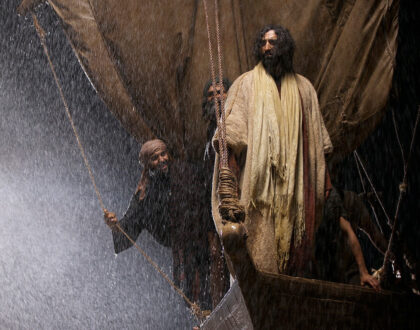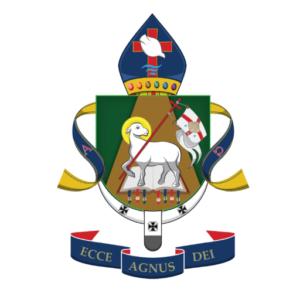Christ Restored All That Was Lost
“Christ Restored All That Was Lost”
Archbishop Loren Thomas Hines
Third Sunday of Easter
April 10, 2016
Readings: Acts 9:1-19, Psalm 33:1-11
Revelation 5:6-14
John 21:1-14
Easter is not a day or a season; it is LIFE. That is what Christ gave us at Easter – new life. Many think that Easter is just about Christ dying for our sins, but it’s more than that. He also took our grief, sickness, pain and death. He conquered death, hell and the grave.
In the beginning, in the Garden, life was perfect. There was no pain, sickness and death. These are all works of the devil, a result of man’s disobedience. Christ came for this purpose: to destroy the works of the devil. The whole purpose of Easter is to make us realize that God is restoring man to his original state. It is LIFE that Christ came to give us. Ephesians 1 tells us what Christ has restored to us. If only we believe, ALL things are possible. Easter is about restoring all that was lost.
In Acts 9, Paul believed that Judaism was the right religion, so he was offended by the teachings of Christ and persecuted the Lord’s followers. Paul felt justified by the stoning and killing of Stephen, much like today’s terrorists who feel right about killing those who don’t share their belief. Saul was, in fact, on his way to Damascus to persecute Christians. So why would God want him on His team? God saw Paul’s heart. He was fiercely loyal to what he believed in. He stopped at nothing to defend Judaism, was unwavering and totally committed to this task.
On his way to Damascus, a light from heaven flashed around Paul and he fell to the ground. He heard a voice saying, “Saul, Saul, why are you persecuting Me?” Paul’s reply is interesting: “Who are You, Lord?” He addressed the voice as Lord, acknowledging that the voice belonged to a higher power who could knock him off and make him lose his sight. Meanwhile, the Lord spoke to Ananias, a disciple in Damascus, in a vision, and asked him to go to Paul and lay his hands on Paul that he might regain his sight. Ananias hesitated because he had heard about Paul and the harm he had inflicted on the Lord’s followers, and he knew that Paul was given authority by the chief priests to arrest those who call on the Lord’s Name. God told him that Paul is His chosen instrument to “bear My Name before the Gentiles and kings and the sons of Israel”. So Ananias went to Paul and laid his hands on him. After Paul regained his sight, he was baptized.
Paul didn’t go back to Jerusalem to consult with Peter and the elders but goes to the wilderness, where he stayed for three years with the Holy Spirit, who gave him revelation of the plan of God for man. The disciples were with Christ for three years where they were trained in the works of God. Yet when Christ was persecuted, they fell away. Peter denied Him three times. Not Paul. He was committed, and after he came to know God, he dedicated the rest of his life to God by spreading the Gospel. Paul’s is a story of restoration.
The Lord appeared to His disciples to prove to them that He was the same flesh and blood before His crucifixion, and not a ghost. He showed them His hands where the nails were and His side, and ate with them. Scriptures tell us that He appeared three times, but it really adds up to more than that – He appeared to the women, to Peter, to the two disciples on the road to Emmaus and to the disciples, and these are counted as one because they all happened in one day. He had flesh but He was also divine because He could be in two places at one time and walk through doors and walls. In most of His appearances, Peter was there.
After His crucifixion, Christ left a gap in the lives of the disciples. For three years, He was always in their lives, leading and training them in the ministry. With Him gone, there was an emptiness, so Peter was going back to fishing, as if he was giving up. For three years, they were in ministry – healing, preaching, etc. But when Christ was no longer there, Peter and the other disciples thought of going back to their old life. So they go fishing, and it was night time, symbolic of the darkness, sadness and despair they were experiencing. Peter was totally immersed in what he was doing; he stripped off his outer garments so he could fish unencumbered. They fished all night but caught nothing. At daybreak, the Lord stood on the beach but they didn’t recognize Him. Jesus asked them if they had any fish, to which they replied, “No”. The terse reply implied that all was not well. The Lord asked them to cast the net on the right-hand side of the boat. Peter didn’t argue nor respond but they did as the Lord instructed them, and immediately, there were fish. John then told Peter, “It is the Lord”. Peter put on his outer garment and jumped off the boat to go to the Lord.
When Christ called Peter three years prior, he was also fishing and caught nothing. The Lord also asked him to cast his net on the other side, and the net almost broke because of the large number of catch (which wasn’t numbered). This time after His resurrection, the net didn’t break and there were exactly 153 fish. There was a definite number of catch, as if Christ was giving them specific instructions. By the beach, the Lord already had fire and fish cooking and some bread. Still He asked them to bring some of the fish they caught. The Lord was showing them that in the Kingdom of God, everyone will be expected to contribute something.
After their meal, the Lord talked to Peter (he was the one who led the others back to fishing) and asked him three times, “Do you love Me?” The Lord was remembering Peter’s denial of Him. The Lord was really asking him, “Is your heart fully committed to Me? Do I have your loyalty?” The third time, the Lord was asking Peter, “Do you have an emotional tie to Me?” Peter then understood what the Lord was saying and he was dismayed.
The difference between Paul and Peter is that Paul didn’t become head of the Church. Peter was unstable – he tried to prevent Christ from going to Jerusalem, he cut off the soldier’s ear but Christ rebuked him by putting the soldier’s ear back on. These two instances show Peter’s wavering and impulsiveness, yet the Lord chose him to be the head of the early Church. Paul, on the other hand, was chosen to bring the Gospel to the Gentiles and Israel because of his loyalty and commitment to what he believed in. This shows us that God can use all of us, despite our past and our weaknesses. This is what Easter is all about – the restoration of all. We lack in no good thing. We can do the work that God gives us.
We have to believe in the goodness and greatness of God. He did it all for us. It is finished! He bore our sins, sickness, pain and death. HE LEFT NOTHING OF THE OLD LIFE IN US! The enemy deceives us into believing otherwise. Easter brings new life to all of us, like a caterpillar that has metamorphosed into a beautiful butterfly with wings to fly.
Recent Sermons

Jesus, Calmer Of Storms
June 23, 2024

Harvest Time Stemming From The Smallest Seed
June 17, 2024

Not Bound By Limitations To Minister
June 10, 2024

